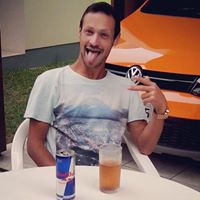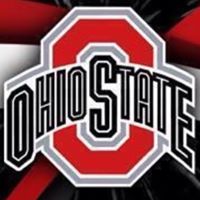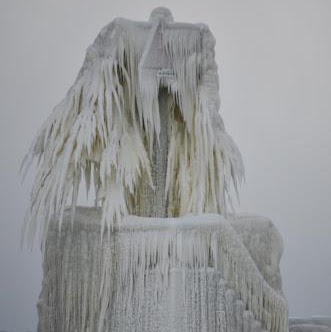Douglas Edward Hahn
age ~66
from Virginia Beach, VA
- Also known as:
-
- Douglas E Hahn
- Douglas Living Hahn
- Douglas R Hahn
- Douglas E Hann
- Hahn Douglas
- Phone and address:
-
2709 Cattayle Run, Virginia Beach, VA 23452
7574862021
Douglas Hahn Phones & Addresses
- 2709 Cattayle Run, Virginia Bch, VA 23452 • 7574862021
- 1397 Taylor Farm Rd, Virginia Bch, VA 23453
- Virginia Beach, VA
- Melbourne, FL
- Chesapeake, VA
- Greenville, NC
- Reno, NV
- Washington, NC
- 2709 Cattayle Run, Virginia Bch, VA 23452 • 7577843852
Work
-
Position:Handlers, Equipment Cleaners, Helpers, and Laborers Occupations
Education
-
Degree:JD - Juris Doctor
-
School / High School:Marquette University Law School
Ranks
-
Licence:Wisconsin - Good Standing
-
Date:1981
Emails
Specialities
Intellectual Property • Copyright • Intellectual Property Counseling and Patents • Intellectual Property Litigation • Trade Dress • Trade Secret • Trademark • Antitrust and Unfair Competition • Business Torts • Life Science • Technology Transactions • Patent Application • Copyright Application • Antitrust & Trade Law • Commercial
Us Patents
-
Systems And Methods For Containing And Delivering Protective Materials To Raw Water Passageways Within Liquid-Cooled Marine Engines
view source -
US Patent:6579136, Jun 17, 2003
-
Filed:Dec 14, 2001
-
Appl. No.:09/683333
-
Inventors:Douglas Hahn - Virginia Beach VA
Mark Skrzypek - Chesapeake VA
Joseph Zablocki - Brandenton FL
Eric Von Hoene - Norfolk VA
Robert Galway - Virginia Beach VA
Carl Stone, II - Portsmouth VA
Cedric Savineau - Virginia Beach VA -
Assignee:AB Volvo Penta - Göteborg
-
International Classification:B63H 2110
-
US Classification:440 88
-
Abstract:System and method for protecting a cooling system of a liquid-cooled engine using a protective material. This system enables a boat operator to flush the cooling system using salt, brackish or fresh water. In one embodiment, the system includes a reservoir, a dispenser and a connection device. The reservoir is capable of containing a protective material that can include, among others properties, anticorrosive properties. The dispenser controls release of the protective material from the reservoir and can be controlled manually or through a control unit. The system is coupled with the cooling system downstream from raw water intake ports and upstream from a terminal end of the cooling system as the cooling system terminates at the exhaust port. The protective fluid can be dispensed using gravity feed or a pump.
-
Barrel-Type Internal Combustion Engine And/Or Piston Actuated Compressor With Optimal Piston Motion For Increased Efficiency
view source -
US Patent:20110232600, Sep 29, 2011
-
Filed:Sep 8, 2010
-
Appl. No.:12/877312
-
Inventors:DOUGLAS EDWARD HAHN - Virginia Beach VA, US
-
International Classification:F02B 75/32
-
US Classification:1231974
-
Abstract:A barrel-type piston-actuated internal combustion engine or pump has a drive shaft with an attached drive cam rotatably disposed within a housing. The drive cam has cam surfaces on at least one side facing a piston and cylinder. A cam follower, attached to a piston rod, is in contact with and follows the cam surfaces of the drive cam, such that rotation of the drive shaft with the drive cam results in linear reciprocating motion of the piston rod and its associated piston, and vice versa. The cam surfaces of the drive cam are cyclical in the circumferential direction in accordance with a non-sinusoidal function that controls the motion of the piston within its cylinder. The cam surfaces, and thus the piston motion, are designed and tailored to achieve desired combustion characteristics, in the case of an internal combustion engine, or pumping characteristics in the case of a pump.
-
Anti Ingestion Device
view source -
US Patent:60771372, Jun 20, 2000
-
Filed:Jan 8, 1999
-
Appl. No.:9/227333
-
Inventors:Douglas E. Hahn - Virginia Beach VA
-
Assignee:Volvo Penta of the Americas, Inc. - Chesapeake VA
-
International Classification:B63H 2138
-
US Classification:440 89
-
Abstract:An anti ingestion device for use with an engine, preferably a marine engine. The device comprises an exhaust manifold or riser system for exhausting engine gases, wherein the exhaust manifold has a first end and a second end, and the first end is connected to a cylinder head. There is a one-way pressure relief valve having a first end and a second end, wherein the first end is coupled to the exhaust manifold and the second end is exposed to atmospheric pressure. An air inlet line is coupled to the second end of the one-way pressure relief valve, such that the air inlet line serves as a conduit for guiding atmospheric pressure to the one-way pressure relief valve, thereby providing atmospheric pressure for passage into the exhaust manifold.
-
Hydrogen Enriched Natural Gas As A Motor Fuel With Variable Air Fuel Ratio And Fuel Mixture Ratio Control
view source -
US Patent:57878641, Aug 4, 1998
-
Filed:Dec 21, 1996
-
Appl. No.:8/771647
-
Inventors:Robert Kirk Collier - Merritt Island FL
Robert Louis Hoekstra - Oviedo FL
David Neal Mulligan - Titusville FL
Douglas Edward Hahn - Melbourne FL -
Assignee:University of Central Florida - Orlando FL
-
International Classification:F02M 6706
-
US Classification:123492
-
Abstract:A hydrogen and natural gas fuel mixture for internal combustion engines is provided for vehicle engines such as those used in standard production engines for automobiles, trains and lawn mowers. The gaseous fuel for operating a vehicle combustion engines includes approximately 21 to 50% Hydrogen and the rest natural gas constituents such as combinations of Methane, Carbon Dioxide, Nitrogen, Ethane, Propane, Iso-Butane, N-Butane, Iso Pentane, N-Pentane, and Hexanes Plus. A fuel mixture of approximately 28 to 36 percent Hydrogen and a air fuel equivalence ratio of approximately 0. 625 is an extreme lean burn condition that yields hydrocarbon emission levels of less than approximately 104 ppm(0. 84 hm/hp hr. ). Current internal combustion engines that are in mass production can take this alternative fuel without any substantial modifications to their systems.
-
Hydrogen Enriched Natural Gas As A Clean Motor Fuel
view source -
US Patent:56606028, Aug 26, 1997
-
Filed:Mar 4, 1996
-
Appl. No.:8/611400
-
Inventors:Robert Kirk Collier - Merritt Island FL
Robert Louis Hoekstra - Oviedo FL
David Neal Mulligan - Titusville FL
Douglas Edward Hahn - Melbourne FL -
Assignee:University of Central Florida - Orlando FL
-
International Classification:C01B 300
-
US Classification:481273
-
Abstract:A fuel mixture is disclosed. In a preferred embodiment, an alternative gaseous fuel for operating a combustion engine includes approximately 21 to 50% Hydrogen and the rest natural gas constituants such as combinations of Methane, Carbon Dioxide, Nitrogen, Ethane, Propane, Iso-Butane, N-Butane, Iso Pentane, N-Pentane, and Hexanes Plus. Current production engines without any substantial modifications can take this alternative fuel. This alternative fuel is lean burning and emits emissions that are below current legal standards.
-
Hydrogen Enriched Natural Gas As A Motor Fuel With Variable Air Fuel Ratio And Fuel Mixture Ratio Control
view source -
US Patent:56669232, Sep 16, 1997
-
Filed:Apr 25, 1995
-
Appl. No.:8/428626
-
Inventors:Robert Kirk Collier - Merritt Island FL
Robert Louis Hoekstra - Oviedo FL
David Neal Mulligan - Oakhill FL
Douglas Edward Hahn - Melbourne FL -
Assignee:University of Central Florida - Orlando FL
-
International Classification:F02M 2104
-
US Classification:123488
-
Abstract:A hydrogen and natural gas fuel mixture for internal combustion engines is provided for vehicle engines such as those used in standard production engines for automobiles, trains and lawn mowers. The gaseous fuel for operating a vehicle combustion engines includes approximately 21 to 50% Hydrogen and the rest natural gas constituents such as combinations of Methane, Carbon Dioxide, Nitrogen, Ethane, Propane, Iso-Butane, N-Butane, Iso Pentane, N-Pentane, and Hexanes Plus. A fuel mixture of approximately 28 to 36 percent Hydrogen and a air fuel equivalence ratio of approximately 0. 625 is an extreme lean burn condition that yields hydrocarbon emission levels of less than approximately 104 ppm (0. 84 hm/hp hr. ). Current internal combustion engines that are in mass production can take this alternative fuel without any substantial modifications to their systems.
Resumes

President At Enginetec, Inc.
view sourcePosition:
President at Virginia Speed
Location:
Virginia Beach, Virginia
Industry:
Defense & Space
Work:
Virginia Speed
President
Hahn Boord Marine 2009 - 2010
Director
EngineTec, Inc. 2000 - 2009
President
Volvo Penta 1995 - 2001
Director Engine and Reliability Engineering
President
Hahn Boord Marine 2009 - 2010
Director
EngineTec, Inc. 2000 - 2009
President
Volvo Penta 1995 - 2001
Director Engine and Reliability Engineering
Education:
Florida Institute of Technology 1981 - 1987
BSME, Mechanical Engineering
BSME, Mechanical Engineering

Douglas Hahn
view sourceLocation:
United States

Owner, Enginetec, Inc.
view sourcePosition:
Owner at EngineTec, Inc.
Location:
Norfolk, Virginia Area
Industry:
Maritime
Work:
EngineTec, Inc.
Owner
Owner
Education:
Florida Institute of Technology
Name / Title
Company / Classification
Phones & Addresses
Owner/President
Winnipeg Funeral Transfer Services Ltd.
Winnipeg Funeral Sanitation Service
Funeral Related Services
Winnipeg Funeral Sanitation Service
Funeral Related Services
8-1042 Arlington Street, Winnipeg, MB R3E 2G2
2049562882
2049562882
President
EngineTec, Inc
Ret Auto/Home Supplies
Ret Auto/Home Supplies
1397 Taylor Farm Rd, Virginia Beach, VA 23453
7574685102
7574685102
Owner/President
Winnipeg Funeral Transfer Services Ltd
Funeral Related Services
Funeral Related Services
2049562882
Director
Advanced Engineering Innovations, Inc
829 N Hbr City Blvd, Melbourne, FL 32935
Wikipedia References

Douglas Hahn
Lawyers & Attorneys

Douglas D. Hahn - Lawyer
view sourceAddress:
Menn Law Firm
9207316631
9207316631
Licenses:
Wisconsin - Good Standing 1981
Education:
Marquette University Law School
Degree - JD - Juris Doctor - Law
Graduated - 1981
St Norbert College
Degree - BBA - Business Administration
Graduated - 1978
Degree - JD - Juris Doctor - Law
Graduated - 1981
St Norbert College
Degree - BBA - Business Administration
Graduated - 1978
Specialties:
Estate Planning - 20%
Probate - 20%
Real Estate - 20%
Business - 20%
Elder Law - 20%
Probate - 20%
Real Estate - 20%
Business - 20%
Elder Law - 20%
Associations:
American Bar Association - Member
Fox Valley Estate Planning Council - Member
State Bar of Wisconsin - Member
Fox Valley Estate Planning Council - Member
State Bar of Wisconsin - Member

Douglas Hahn - Lawyer
view sourceOffice:
Stradling Yocca Carlson & Rauth A Professional Corporation
Specialties:
Intellectual Property
Copyright
Intellectual Property Counseling and Patents
Intellectual Property Litigation
Trade Dress
Trade Secret
Trademark
Antitrust and Unfair Competition
Business Torts
Life Science
Technology Transactions
Patent Application
Copyright Application
Antitrust & Trade Law
Commercial
Copyright
Intellectual Property Counseling and Patents
Intellectual Property Litigation
Trade Dress
Trade Secret
Trademark
Antitrust and Unfair Competition
Business Torts
Life Science
Technology Transactions
Patent Application
Copyright Application
Antitrust & Trade Law
Commercial
ISLN:
915945632
Admitted:
1999
University:
University of Texas, B.S., 1994
Law School:
Northwestern School of Law, J.D., 1998

Douglas Hahn
view source
Douglas Hahn
view source
Douglas Hahn
view source
Douglas Hahn
view source
Douglas Hahn
view source
Douglas Hahn
view source
Douglas Hahn
view source
Douglas Hahn
view sourceMyspace
Googleplus

Douglas Hahn
Work:
Freelance consultancy - Content Writer / Editor (2005)
Education:
Loyola University Chicago - English / Classics, Sarah Lawrence College - Poetics
About:
I write prose for money and verse for pleasure; I code eBooks but revere the printed page.
Tagline:
Poet, polymath, and content writer in San Francisco.

Douglas Hahn

Douglas Hahn

Douglas Hahn

Douglas Hahn

Douglas Hahn

Douglas Hahn

Douglas Hahn
Flickr
Youtube
Classmates

Douglas Hahn
view sourceSchools:
Slatington High School Slatington PA 1978-1982

Douglas Hahn
view sourceSchools:
Shorewood High School Shorewood WI 1994-1998
Community:
Gaylord Hanson, Pat Margoles, Jim Wood

Douglas Hahn
view sourceSchools:
Absarokee High School Absarokee MT 1988-1992
Community:
Janie Diaddezio, Mike Balich, Debra Lindstrand, Juli Hussey, Leslie Mccain

Douglas Hahn
view sourceSchools:
Wichita Heights High School Wichita KS 1984-1988
Community:
Michael Reece, Darrell Talbert, Deborah Whited, Gathelma Herring, Robert Rubia, Sherry Tuggle, Molly Hansen, Kristi Finney, Brian Larsen, Emma Winchester, Joel Bridges

Douglas Hahn
view sourceSchools:
Amherst Central High School Amherst NY 1979-1983
Community:
Jennifer Sanders, Mark Oconnell, Quang Nguyen, Charlie Kazinski, Eileen Sullivan, Beth Morris, Darryl Paul, Christine Baker, Joseph Zoladz

Douglas Hahn
view sourceSchools:
Preston High School Preston MN 1964-1968
Community:
Jack House, Cheryl Thompson, Don Rehm, Terry Bestor, John Reilly, Beverly Sorenson, Rob Marx, Carol Matson, Jon Arnold, Vince Arnold, Tim Voigt

Douglas Hahn, Absarokee H...
view source
Douglas Hahn, East High S...
view sourceGet Report for Douglas Edward Hahn from Virginia Beach, VA, age ~66

















